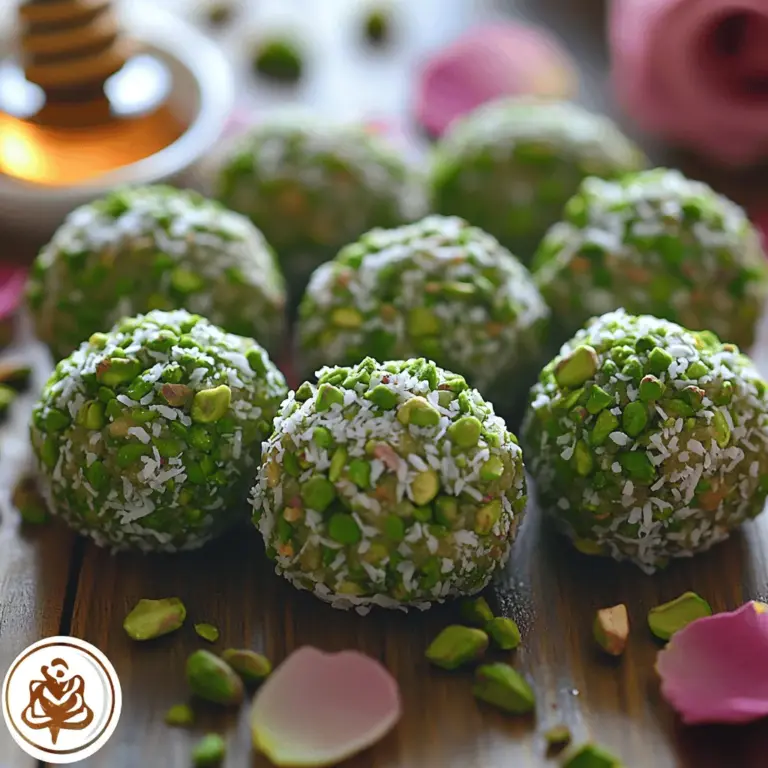Introduction
Lasagna is more than just a dish; it’s a culinary masterpiece that embodies the heart of Italian cuisine. This classic dish has captured the hearts and palates of many around the globe, becoming a staple for family gatherings, potlucks, and special occasions. The beauty of lasagna lies in its layers—each one contributing to a symphony of flavors that culminate in a satisfying meal. Whether it’s the rich tomato sauce, the creamy cheese, or the hearty meat, every component works harmoniously to create a dish that is both comforting and indulgent.
In this guide, we will explore the art of making homemade lasagna, celebrating its rich history and cultural significance while providing you with the essential steps to create your own layered delight. From choosing the right ingredients to perfecting the assembly process, you’ll learn everything you need to know to impress your family and friends with a homemade lasagna that rivals those found in the finest Italian restaurants.
Understanding Lasagna
Origin and History of Lasagna
The roots of lasagna can be traced back to ancient times, with evidence of similar layered dishes appearing in various cultures. However, the lasagna we know today is believed to have originated in Italy. The term “lasagna” is derived from the Greek word “laganon,” which refers to a flat sheet of pasta. Over the centuries, this dish evolved, particularly during the Middle Ages, when layered pasta dishes began to emerge in Italian cuisine.
By the 19th century, lasagna had become a beloved dish in Italy, especially in the Emilia-Romagna region, where it is often made with fresh egg pasta and a rich meat sauce. As Italian immigrants spread across the globe, they brought their culinary traditions with them, leading to the widespread popularity of lasagna in various countries, each putting its unique spin on the classic recipe.
Popular Variations of Lasagna Around the World
Today, lasagna comes in numerous variations, tailored to local tastes and ingredient availability.
– Lasagna Bolognese: This traditional version from Bologna features layers of rich ragù made from minced meat, béchamel sauce, and Parmesan cheese, creating a decadent experience.
– Vegetarian Lasagna: A favorite among plant-based eaters, this variation substitutes meat with layers of roasted vegetables like zucchini, eggplant, and spinach, often combined with ricotta and marinara sauce.
– Seafood Lasagna: A coastal twist, seafood lasagna is typically made with layers of pasta, creamy seafood sauce, and a medley of shrimp, scallops, and crab.
– Mexican Lasagna: A fusion dish that incorporates ingredients like tortillas, salsa, beans, and cheese, reflecting the vibrant flavors of Mexican cuisine.
Each version tells a story of its origin and showcases the versatility of lasagna, making it a dish that can be adapted to suit any palate.
The Cultural Significance of Lasagna in Italian Cuisine
Lasagna holds a special place in Italian culture, often associated with family gatherings and celebrations. It is a dish that brings people together, transcending generations and fostering a sense of community. In many Italian households, lasagna is prepared for Sunday dinners, weddings, and holidays, symbolizing love and togetherness.
Making lasagna is not just about cooking; it’s about creating memories. Families often gather in the kitchen to prepare the ingredients together, sharing stories and laughter as they layer the pasta and sauce. This communal aspect of lasagna preparation exemplifies the Italian philosophy of “la dolce vita,” which emphasizes the enjoyment of life’s simple pleasures.
Key Ingredients for Perfect Lasagna
Creating a delicious lasagna starts with using the right ingredients. Here’s a breakdown of the essential components that will elevate your dish from ordinary to extraordinary.
Overview of Traditional Ingredients
1. Lasagna Noodles: The foundation of any lasagna, noodles can be either fresh or dried. Fresh pasta is often preferred for its delicate texture and ability to absorb flavors, but high-quality dried noodles can also yield great results.
2. Sauce: The sauce is a crucial element that adds depth and flavor. Classic marinara sauce made from ripe tomatoes, garlic, and herbs is a popular choice, while béchamel sauce (a creamy white sauce) can be used to add richness.
3. Cheese: The cheese blend is what makes lasagna creamy and decadent. Traditional recipes often call for ricotta, mozzarella, and Parmesan cheese. Ricotta provides creaminess, mozzarella adds stretch and gooeyness, and Parmesan lends a sharp, nutty flavor.
4. Meat or Vegetables: For a meaty lasagna, ground beef, pork, or a combination of both is commonly used. Alternatively, roasted vegetables or sautéed mushrooms can provide a hearty vegetarian option.
5. Herbs and Spices: Fresh herbs like basil and parsley, along with seasonings such as oregano and black pepper, enhance the flavor profile of lasagna.
Fresh Pasta vs. Store-Bought Noodles
When it comes to choosing between fresh pasta and store-bought noodles, the decision often boils down to personal preference and convenience. Fresh pasta, while requiring more time to prepare, offers a tender texture and superior flavor that can elevate your lasagna. If time is of the essence, high-quality dried noodles can also be a suitable option.
The Importance of Quality Cheese
The cheese used in lasagna can make or break the dish. Fresh, high-quality ricotta is essential for achieving a creamy filling. Look for brands that use whole milk and avoid additives. Mozzarella should be fresh and ideally purchased in balls, allowing you to slice it into even layers. For Parmesan, opt for block cheese that you can grate yourself for the freshest flavor.
Choosing the Right Meat or Vegetarian Alternatives
If you’re opting for a meat lasagna, choose ground beef or pork that is well-seasoned. Look for a blend that has some fat content for added flavor. For a vegetarian option, consider using a mix of hearty vegetables such as spinach, zucchini, and mushrooms, seasoned well to ensure a satisfying taste.
The Role of Sauce in Flavor Development
The sauce is the backbone of your lasagna. A well-made marinara sauce, simmered with fresh herbs and garlic, brings a rich, tangy flavor that complements the other ingredients. For those who prefer a creamier texture, béchamel can be layered in between the pasta sheets, adding a luxurious element.
Fresh Herbs and Spices to Elevate Taste
Incorporating fresh herbs and spices into your lasagna will enhance its overall flavor. Basil and parsley are traditional choices that pair beautifully with tomato sauce. A pinch of red pepper flakes can add a subtle kick, while dried oregano and thyme bring warmth and earthiness to the dish.
Essential Equipment for Making Lasagna
To successfully create a layered lasagna, having the right kitchen tools and equipment is vital. Here are some essentials you will need:
Types of Baking Dishes Suitable for Lasagna
A deep, rectangular baking dish is ideal for lasagna, allowing for multiple layers. Glass or ceramic dishes are preferred as they distribute heat evenly, ensuring that your lasagna cooks through without burning. Typically, a 9×13-inch dish is the standard size used for a family-sized recipe.
Kitchen Tools for Preparation
1. Knife and Cutting Board: A sharp knife and a sturdy cutting board are essential for chopping vegetables and herbs.
2. Mixing Bowl: You’ll need a mixing bowl for combining your cheese filling and another for preparing your sauce.
3. Ladle: A ladle is useful for portioning the sauce evenly between layers.
4. Whisk: If you’re making béchamel sauce, a whisk is essential for achieving a smooth consistency.
Importance of Aluminum Foil and Parchment Paper
Aluminum foil is useful for covering your lasagna during the first half of baking to prevent over-browning. Parchment paper can be used to line the bottom of your baking dish, making it easier to remove the lasagna once baked.
Step-by-Step Guide to Preparing Lasagna
Now that you have a solid understanding of the ingredients and equipment needed, let’s dive into the step-by-step process of preparing your lasagna.
Preparing the Sauce: Traditional Marinara Recipe
1. Sauté Aromatics: In a large saucepan, heat olive oil over medium heat. Add finely chopped onions and garlic, sautéing until translucent.
2. Add Tomatoes: Stir in crushed tomatoes (canned or fresh), and bring the mixture to a simmer.
3. Season: Add salt, pepper, and a pinch of sugar to balance the acidity. Incorporate fresh or dried herbs like basil and oregano.
4. Simmer: Allow the sauce to simmer for 20-30 minutes, stirring occasionally, until it thickens and the flavors meld together.
Making the Cheese Filling: Combining Ricotta, Mozzarella, and Herbs
1. Mix Ingredients: In a mixing bowl, combine ricotta cheese, a beaten egg, a generous handful of grated Parmesan, and chopped fresh herbs such as basil and parsley.
2. Season: Add salt and pepper to taste, ensuring the filling is well-seasoned for a flavorful layer.
3. Prepare Mozzarella: Slice the mozzarella into thin rounds, ready for layering.
Cooking the Meat (or Sautéing Vegetables for a Vegetarian Version)
1. Brown the Meat: In a skillet over medium heat, add ground beef or pork. Cook until browned, breaking it apart with a spatula. Drain excess fat if necessary.
2. Combine with Sauce: Once cooked, mix the meat with your prepared marinara sauce, allowing it to simmer together for additional flavor.
3. For Vegetarians: If using vegetables, sauté a mix of diced zucchini, mushrooms, and spinach in olive oil until softened, then season well before incorporating them into the sauce.
Assembling the Layers: Tips for Even Distribution
1. Start with Sauce: In your prepared baking dish, spread a thin layer of marinara sauce on the bottom to prevent sticking.
2. Layer Noodles: Place a layer of noodles over the sauce, ensuring they cover the entire surface.
3. Add Filling: Spread a portion of the cheese filling over the noodles, followed by a layer of the meat (or vegetable) sauce.
4. Repeat Layers: Continue layering the components—noodles, cheese filling, sauce—until all ingredients are used, finishing with a layer of noodles topped with sauce and a generous sprinkling of mozzarella and Parmesan cheese.
This structured approach will ensure that each bite of your lasagna is a perfect blend of flavors and textures, making your homemade creation truly unforgettable.
Stay tuned for the continuation of this guide, where we will explore baking, serving, and storing your delicious lasagna masterpiece.

Baking the Lasagna: Temperature and Timing for the Perfect Bake
Achieving the right texture and flavor in homemade lasagna is as much about the baking process as it is about the ingredients. The ideal temperature for baking lasagna is typically set at 375°F (190°C). This temperature allows the cheese to melt beautifully while ensuring the noodles cook evenly without becoming mushy.
Before placing your lasagna in the oven, it’s crucial to cover it with aluminum foil for the first half of the baking time. This prevents the top layer from browning too quickly while the inside heats through. After about 30-40 minutes, remove the foil to allow the top to develop a golden, bubbly crust. The entire baking process usually takes about 60-75 minutes, but keep an eye on it; if the edges start to brown too much, cover them with foil for the remainder of the cooking time.
Layering Techniques for Optimal Flavor
The Art of Layering: How to Create the Perfect Balance
Layering is an essential component of lasagna-making, and mastering it can elevate your dish to new heights. Start each layer with a thin spread of sauce on the bottom of your baking dish. This not only prevents the noodles from sticking but also adds moisture right from the start.
Next, lay down your noodles, ensuring they overlap slightly for a solid base. Follow this with a layer of ricotta or cottage cheese mixed with egg and herbs, then add your meat or vegetables, and sprinkle on some mozzarella. Repeat this process, ensuring that each layer is evenly distributed, which promotes consistent flavor and texture throughout.
Importance of Starting and Ending Layers Properly
The first and last layers are particularly important in achieving a well-balanced lasagna. Starting with sauce on the bottom creates a barrier that keeps the noodles moist and flavorsome. For the top layer, finish with a generous amount of mozzarella and a sprinkle of Parmesan cheese. This not only enhances the flavor but also creates a beautiful golden crust when baked.
Tips for Preventing a Soggy Bottom
A soggy bottom can ruin an otherwise perfect lasagna. To prevent this, consider the following tips:
– Use less sauce: Ensure your sauce isn’t too watery. If using a homemade sauce, try simmering it longer to reduce excess liquid.
– Pre-cook vegetables: If incorporating moisture-rich vegetables like zucchini or spinach, sauté or roast them first to draw out excess moisture.
– Layer strategically: Alternate layers of noodles and sauce with drier ingredients like cheese or meat to absorb moisture.
Customizing Your Lasagna
Exploring Vegetarian and Vegan Options
Lasagna is incredibly versatile and can easily accommodate vegetarian and vegan diets. For a vegetarian option, consider using a mix of seasonal vegetables such as spinach, mushrooms, and bell peppers. For a vegan version, substitute ricotta with a tofu mixture blended with nutritional yeast and herbs. You can also opt for vegan cheese or simply skip the cheese altogether for a lighter option.
Incorporating Seasonal Vegetables for Freshness
Utilizing seasonal vegetables not only enhances the flavor but also adds nutritional value to your lasagna. For example, spring is ideal for asparagus and peas, while fall brings butternut squash and kale. Incorporate these vegetables into your layers for a fresh and vibrant dish that changes with the seasons.
Spicing It Up with Different Cheeses and Meats
Experimenting with different cheeses can elevate your lasagna’s flavor profile. Beyond traditional mozzarella, consider adding ricotta, goat cheese, or even feta for a tangy twist. If you prefer meat, try using Italian sausage, ground turkey, or a blend of meats to deepen the flavor.
Creative Twists: Pesto, Spinach, and More
For a unique flair, consider incorporating pesto sauce into your layers or using spinach mixed with ricotta for a classic “spinach lasagna.” You can also experiment with different sauces, such as a white béchamel sauce or a spicy arrabbiata, to give your dish a fresh spin.
Serving Suggestions and Pairings
Ideal Side Dishes to Complement Homemade Lasagna
Lasagna is a hearty dish that pairs well with lighter sides. A simple green salad dressed with lemon vinaigrette can balance the richness of the lasagna. Garlic bread or bruschetta also make excellent accompaniments, providing a crunchy contrast to the soft layers of pasta.
Wine Pairings That Enhance the Meal Experience
When it comes to wine, a medium-bodied red, such as Chianti or Sangiovese, complements the flavors of lasagna beautifully. If you prefer white wine, a crisp Pinot Grigio can provide a refreshing contrast. For a non-alcoholic option, consider serving sparkling water with a slice of lemon for a refreshing palate cleanser.
Presentation Tips for Serving Lasagna
Presentation can enhance the overall dining experience. Allow your lasagna to cool for about 15 minutes after baking. This resting time allows the layers to set, making it easier to slice and serve. For an elegant touch, garnish each serving with fresh basil or parsley, and serve with a sprinkle of grated Parmesan on top.
Storing and Reheating Lasagna
Best Practices for Storing Leftovers
Lasagna makes for excellent leftovers, but proper storage is key to maintaining its flavor and texture. Allow the lasagna to cool completely before storing it in an airtight container. It can be kept in the refrigerator for up to three days.
Freezing Lasagna for Long-Term Storage
Lasagna freezes well, making it a convenient option for meal prep. To freeze, wrap the entire dish tightly in plastic wrap and then in aluminum foil. Alternatively, you can freeze individual portions in freezer-safe containers. Lasagna can be stored in the freezer for up to three months. When ready to eat, thaw it overnight in the refrigerator before reheating.
How to Reheat Lasagna Without Drying It Out
To reheat lasagna without losing its moisture, preheat your oven to 350°F (175°C). Place the lasagna in an oven-safe dish, cover it with foil, and heat for about 30-45 minutes, or until heated through. If using the microwave, add a splash of water to the dish, cover it with a microwave-safe lid, and heat in short intervals, checking frequently to ensure it doesn’t dry out.
Cultural Variations of Lasagna
Overview of Different Regional Styles
Lasagna is a beloved dish worldwide, and various cultures have put their unique spin on this classic. One popular variation is Lasagna alla Bolognese, which uses a rich meat sauce made from ground beef and pork, layered with béchamel sauce. Another is Lasagna Napoletana, originating from Naples, which often incorporates ricotta and is usually topped with a light tomato sauce.
Unique Ingredients and Preparation Methods from Various Cultures
In Greece, you may find a variation called Moussaka, which substitutes layers of eggplant for pasta and is topped with a creamy béchamel sauce. In some regions of Italy, lasagna is made with green pasta, giving it a vibrant color and earthy flavor, thanks to the addition of spinach in the dough.
Conclusion
Making homemade lasagna is a fulfilling culinary adventure that brings joy to both the cook and those who share in the meal. By mastering the art of layering, exploring customization options, and understanding the best practices for serving and storing, you can create a lasagna that reflects your personal taste and style.
Don’t hesitate to experiment with various ingredients and flavors, making the recipe your own. The beauty of lasagna lies in its adaptability, allowing you to create a unique dish that can be enjoyed with loved ones. So gather around the table with family and friends, share your delicious creation, and relish in the lasting memories that come from a meal made with love.


